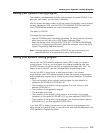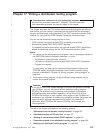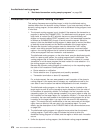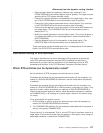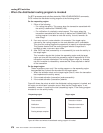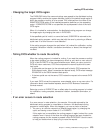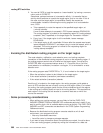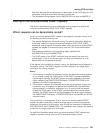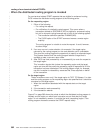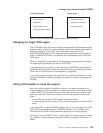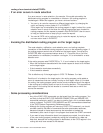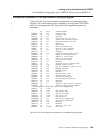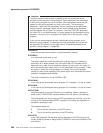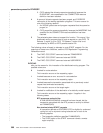
Note that, because the routing program is distributed, all the CICS regions in the
transaction routing set must have access to the data set.
v The distributed routing program can be RMODE ANY but must be AMODE 31.
Routing of non-terminal-related START requests
This section describes how to use a distributed routing program to dynamically
route non-terminal-related EXEC CICS START requests.
Which requests can be dynamically routed?
For a non-terminal-related START request to be eligible for dynamic routing, all of
the following conditions must be met:
v The request is eligible for
enhanced
routing. For general information about the
“enhanced” method of routing transactions invoked by EXEC CICS START
commands, and for specific information about which non-terminal-related START
requests are eligible for enhanced routing, see the
CICS Intercommunication
Guide
.
v The transaction definition in the requesting region specifies both
ROUTABLE(YES) and DYNAMIC(YES).
v The SYSID option of the START command does not specify the name of a
remote region. (That is, the remote region on which the transaction is to be
started must not be specified explicitly.)
If the request is fully eligible for dynamic routing, the distributed routing program is
invoked for routing. The START request is function-shipped to the target region
returned by the routing program.
Notes:
1. If the request is ineligible for enhanced routing, the distributed routing program
is not invoked. Unless the SYSID option of the START command specifies a
remote region explicitly, the START request is function-shipped to the target
region named in the REMOTESYSTEM option; if REMOTESYSTEM is not
specified, the START executes locally.
2. If the request is eligible for enhanced routing but not for dynamic routing (the
transaction may, for example, be defined as DYNAMIC(NO)) the distributed
routing program is invoked for notification only—it cannot route the request.
Unless the SYSID option of the START command specifies a remote region
explicitly, the START request is function-shipped to the target region named in
the REMOTESYSTEM option; if REMOTESYSTEM is not specified, the START
executes locally.
“Daisy-chaining” is not supported. That is, once a non-terminal-related START
request has been dynamically routed to a target region it cannot be dynamically
routed from the target to a third region, even though the transaction is defined as
ROUTABLE(YES) and DYNAMIC(YES). The transaction may, however, be
statically
routed from the target region to a third region.
For definitive information about which non-terminal-related START requests are
eligible for dynamic routing, see the
CICS Intercommunication Guide
.
routing BTS activities
Chapter 17. Writing a distributed routing program 581
|
|
|
|
|
|
|
|
|
|
|
|
|
|
|
|
|
|
|
|
|
|
|
|
|
|
|
|
|
|
|
|
|
|
|
|
|
|
|
|
|
|
|



